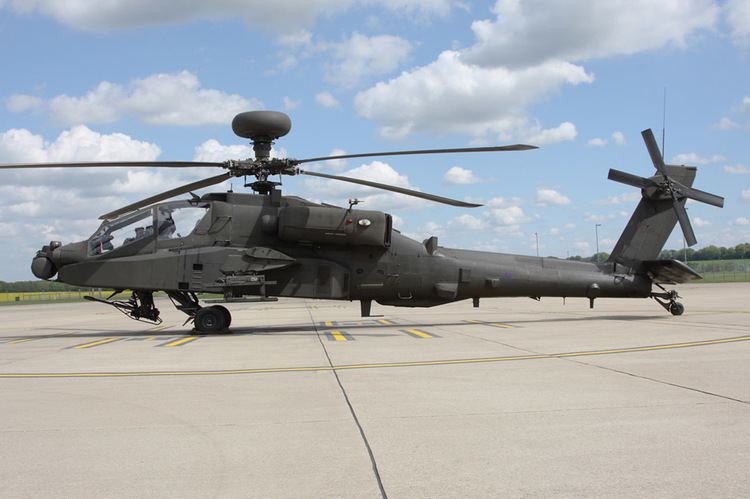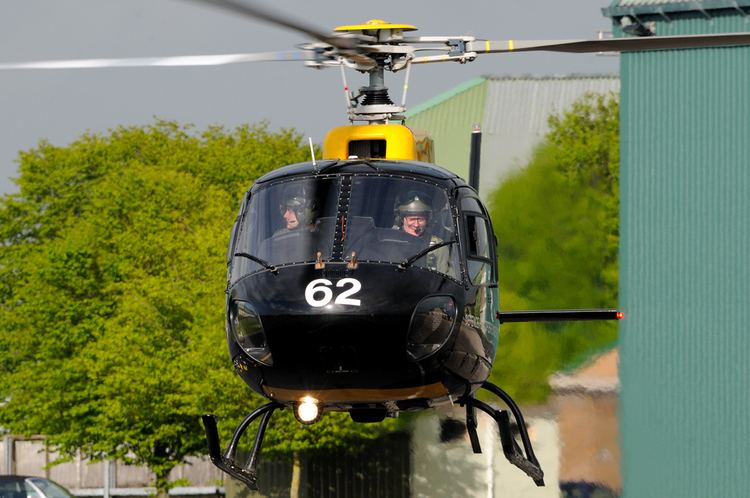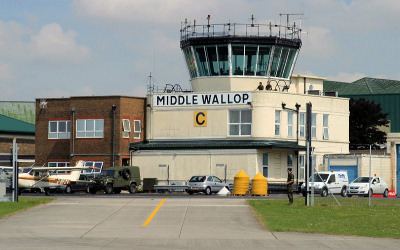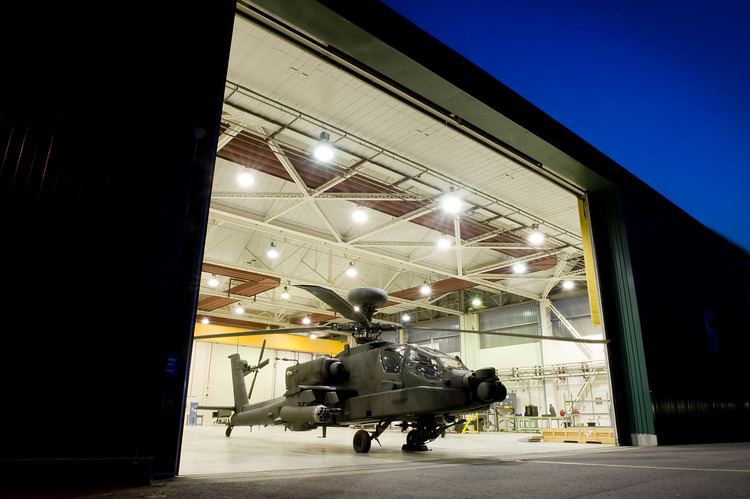In use 1957-Present Elevation 91 m Owner Ministry of Defence | Identifiers ICAO: EGVP Year built 1957 | |
 | ||
Type Army Air Corps airfield Controlled by British Army's Army Air Corps Battles/wars War in Afghanistan (2001–present) 09/27 1,096 metres (3,596 ft) Grass | ||
Aac middle wallop 8th december 2010
AAC Middle Wallop is a British Army base near the Hampshire village of Middle Wallop. The base hosts 2 Regiment Army Air Corps and 7 Regiment AAC under the umbrella of the Army Aviation Centre. The role of 2 Regiment is ground training and the role of 7 Regiment is Aircrew training, AAC Middle Wallop is the base where most Army Air Corps pilots begin their careers. The base was previously under Royal Air Force control and it was then known as RAF Middle Wallop.
Contents
- Aac middle wallop 8th december 2010
- Vulcan xh558 farewell tour south aac middle wallop 11th of october 2015
- Early use
- USAAF use
- RAFRNAS use
- Army Air Corps use
- Operational units
- In Literature
- References

Vulcan xh558 farewell tour south aac middle wallop 11th of october 2015
Early use

The base was opened as RAF Middle Wallop, a training school for new pilots in 1940. It was originally intended for bomber use, however with the Battle of Britain being fought, No. 609 Squadron RAF, flying the Supermarine Spitfire, and 238 Squadron RAF flying the Hurricane Mk1 were moved to Middle Wallop as part of 10 group RAF Fighter Command. In September 1940 604 Squadron RAF a specialist night fighter unit received the Bristol Beaufighter, equipped with four 20-mm cannon under the nose and improved Mark IV AI radio-location equipment. As one of the few Squadrons thus equipped, 604 squadron helped provide night time defence over the UK during the Blitz from late 1940 until mid-May 1941. In this time 50 air victories had been claimed by No. 604 Squadron, 14 by F/L John Cunningham.

RAF Chilbolton was designated the relief landing airfield for Middle Wallop, until it became a fully fledged Fighter Station in its own right, as the Battle of Britain progressed.
USAAF use

Middle Wallop was also used by the United States Army Air Forces Ninth Air Force as IX Fighter Command Headquarters beginning in November 1943. Along with its headquarters mission, the airfield also hosted the 67th Reconnaissance Group being moved from RAF Membury in December 1943 to be in close proximity to IX FC Headquarters. The 67th Group flew the photographic versions of the Lockheed P-38 Lightning (F-5) and North American P-51 Mustang]] (F-6) to fly artillery-adjustment, weather-reconnaissance, bomb-damage assessment, photographic-reconnaissance, and visual-reconnaissance missions to obtain photographs that aided the invasion of the Continent.

After D-Day, both the 67th RG moved to its Advanced Landing Ground at Le Molay-Littry (ALG A-9) and IX FC Headquarters moved to Les Obeaux, France in late June 1944 ending the USAAF presence at Middle Wallop. During the American use, the airfield was designated as USAAF Station 449, ID Code: MW.
RAF/RNAS use

Middle Wallop returned to Royal Air Force use from July 1944 for No. 418 Squadron RCAF and its de Havilland Mosquito nightfighters.
In January 1945, in an exchange with the RAF, Middle Wallop was transferred to Royal Navy use and became 'RNAS Middle Wallop'. HMS Flycatcher the HQ for the Mobile Naval Air Base organization then moved in from RNAS Ludham, which reverted to RAF use. Five units were assembled at Middle Wallop, four transferring to Australia, Hong Kong and Singapore as planned; the last, MONAB X ("HMS Nabhurst"), remained in the UK following the end of the war in the Pacific.
In 1946 the Royal Air Force occupied Middle Wallop again. No. 164 Squadron RAF with its Spitfires came and were renumbered to No. 63 Squadron RAF. The following year No. 227 OCU, an Army Air Observation Post training unit, was moved to the airfield. This was renamed as the Air Observation Post School in 1950 and the Light Aircraft School in 1952.
From mid-1953 to 1957, Middle Wallop was the home for No. 288 Squadron RAF with its Boulton Paul Balliols.
Army Air Corps use
In 1954 a Development Flight (CFS) with helicopters was formed there, this led to the Joint Experimental Helicopter Unit in 1955. On 1 September 1957, when British Army aviation became independent of the RAF, Middle Wallop transferred to the new Army Air Corps, and the School of Army Aviation was established. It changed its name to the Army Aviation Centre on 1 August 2009.
Operational units
In Literature
The opening scene and several subsequent scenes in Victor Canning's 1972 thriller The Rainbird Pattern are set in the AAC.
